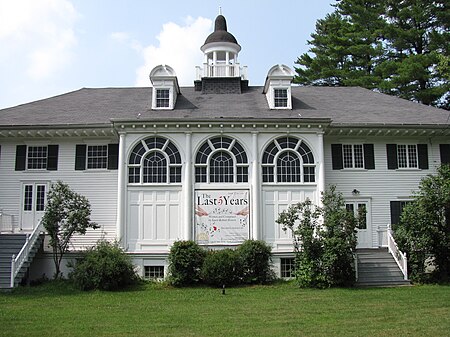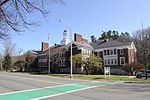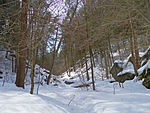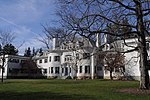Stockbridge Casino
1887 establishments in MassachusettsBuildings and structures in Berkshire County, MassachusettsEvent venues established in 1887Event venues on the National Register of Historic Places in MassachusettsNational Register of Historic Places in Berkshire County, Massachusetts ... and 2 more
Queen Anne architecture in MassachusettsStockbridge, Massachusetts

The Stockbridge Casino is a historic building at the junction of East Main Street and Yale Hill Road in Stockbridge, Massachusetts. Built in 1887, it is a prominent local work of architect Stanford White, and has served as a cultural center in the community since its construction, despite being moved in 1928. Now a part of the grounds of the Berkshire Theatre Festival, the building was added to the National Register of Historic Places in 1976.
Excerpt from the Wikipedia article Stockbridge Casino (License: CC BY-SA 3.0, Authors, Images).Stockbridge Casino
East Main Street,
Geographical coordinates (GPS) Address Nearby Places Show on map
Geographical coordinates (GPS)
| Latitude | Longitude |
|---|---|
| N 42.282222222222 ° | E -73.301666666667 ° |
Address
East Main Street 83
01260
Massachusetts, United States
Open on Google Maps











